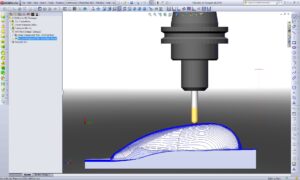Over the past 10 years, productivity from the manufacturing industry has increased 1.2% compared to 2.6% from the previous 7 years. But new emerging technology trends are disrupting the way engineering companies design, manufacture, and deliver products. There is a need for increased innovation to ensure that products are differentiated, allowing you and your teams to compete in an increasingly competitive environment. Increasing productivity remains critically important—but finding efficient and cost-effective methods is key.
In the past, product design and manufacturing groups typically operated as separate, disconnected functions resulting in lots of late stage engineering changes, affecting product cost, quality, and time to market. Designers typically use CAD software to design the product and manufacturing departments use CAM applications to create tool paths. Data imports, translations, and conversions are then needed once the design is completed and handed over to manufacturing, because of the standalone applications used by these departments. Any required design changes because of manufacturability issues would mean design and manufacturing need to repeat the process to finish up the production.
With a completely integrated CAD/CAM solution like CAMWorks, a bridge is created between design and manufacturing teams and gives the user complete control over the whole design and manufacturing process. This integrated CAD/CAM environment is a critical factor in helping to ensure the users can benefit from solids-based, fully associative CNC machining, whether it’s with native solid models or neutral file formats like IGES, STEP, etc. Users can make the design changes easily and toolpaths will automatically adapt themselves.






